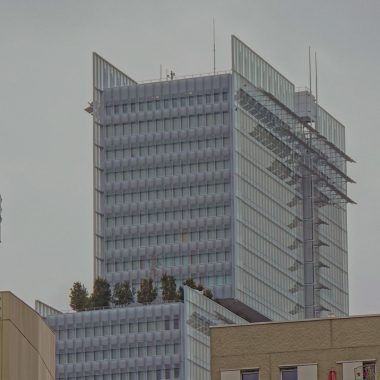After the French athletes were honoured on Saturday 14 September with a Parade of Champions on the Champs-Élysées, the Olympic cauldron took its final flight over the Tuileries Gardens. As the dismantling of the Olympic and Paralympic venues gets underway, the question arises: ‘What happens next? The fate of the rings on the Eiffel Tower, the future of the Olympic cauldron and even that of the countless objects emblazoned with the colours of Paris 2024 – bobs, water bottles and other T-shirts – all raise questions. Should we put them away in our souvenir boxes to preserve their exceptional character, or should we make them part of our daily lives so that the fervour that has been driving us for several weeks never disappears?
The Paris 2024 Olympic and Paralympic Games have been designed with sustainability in mind. The stadium at the foot of the Eiffel Tower, the Grand Palais, the esplanade des Invalides, the Château de Versailles… these sites have not only made Paris 2024 splendid, but have also enabled this edition of the Games to be more responsible than previous editions. In its bid to host the Games, Paris made a strong commitment to ‘halve its carbon footprint compared to previous editions and offset any emissions that were not avoided’. To meet this commitment, the choice was made to use as much existing infrastructure as possible, to limit the construction of new facilities and thus avoid the phenomenon of ‘white elephants’. These stadiums, which are abandoned after most large-scale sporting events despite their staggering construction costs, have almost become a tradition that the Paris 2024 Games Organising Committee did not want to subscribe to.
Apart from the Arena at Porte de la Chapelle, the Olympic Aquatics Centre and the athletes’ village, both of which were built in Saint-Denis, the promise of a minimalist material legacy was kept with flying colours. Now that the Games are over, however, the French seem to be looking for a legacy to which they can attach themselves, so that we don’t forget the two weeks that thrilled us all. While the temporary stands are gradually being dismantled and the Paris 2024 decals are gradually disappearing, we find it difficult to go so far as to abandon the Olympic rings on the Eiffel Tower and the famous cauldron in the Tuileries Gardens. Although the latter has begun to be emptied of its helium, politicians have nevertheless taken up the issue. French President Emmanuel Macron and Paris Mayor Anne Hidalgo have both said they are in favour of maintaining these two symbols: the rings on the Eiffel Tower ‘at least until 2026’ and the cauldron ‘for as long as possible’. While some fear that this choice will change the face of the French capital, it is important to remember that Paris is a city that has always been able to evolve with the times, its history and the events that have passed through it. Examples include the Eiffel Tower, which survived after the 1889 Universal Exhibition; the Luxor obelisk, erected in 1836 in the centre of Place de la Concorde; the Arc de Triomphe in Place de l’Étoile, whose construction was decided by Napoleon I after the Battle of Austerlitz; and the Louvre Pyramid, inaugurated in 1989 by President François Mitterrand. These few examples show that keeping the Olympic cauldron designed by Mathieu Lehanneur could be the visible trace that our era would leave on the Parisian landscape.
According to the sports barometer published by Odoxa on 14 September for Winamax and RTL, 68% of French people say they are in favour of the Olympic cauldron surviving after the end of the Olympic Games. However, more people are against keeping the Olympic rings on the Eiffel Tower (62% of French people would not want this). Among them: Thomas Jolly, artistic director of the opening and closing ceremonies of the Paris 2024 Olympic and Paralympic Games, who answered a question on the subject on France 2. He said that he was not in favour of keeping the cauldron and the rings, and that he was more in favour of the beauty of the ephemeral, before pointing out that he had no say in the matter. This reminds us that the beauty of the Paris Games lies in their temporary nature. Even if we don’t entirely want Paris to return to its usual self, we can still wonder whether keeping too many symbols isn’t like keeping your Christmas tree once the festive season is over.
One thing’s for sure, the questions we’re all asking are simply a reflection of our human reflexes, which encourage us never to leave the state of grace we’ve been in since the opening ceremony of the Games. By not wanting to extinguish this Olympic cauldron, could it not be the flame that has been lit in our hearts that we are trying to protect?
We would like this flame never to be extinguished, because it transcends all material symbols. This flame is what we call the Olympic spirit. This spirit, made up of harmony, fervour and national and international unity, is the greatest legacy that the Olympic and Paralympic Games could offer us. The Games can be seen as an enchanted interlude in which the diversity of nations, the athletes and their performances have helped to bind people together around shared values: effort, perseverance, benevolence and excellence. Now it’s up to us to maintain this momentum beyond the festivities. It’s up to us to ensure that the flame never goes out, whatever the fate of the Olympic cauldron.
By Jean Le Borgne










